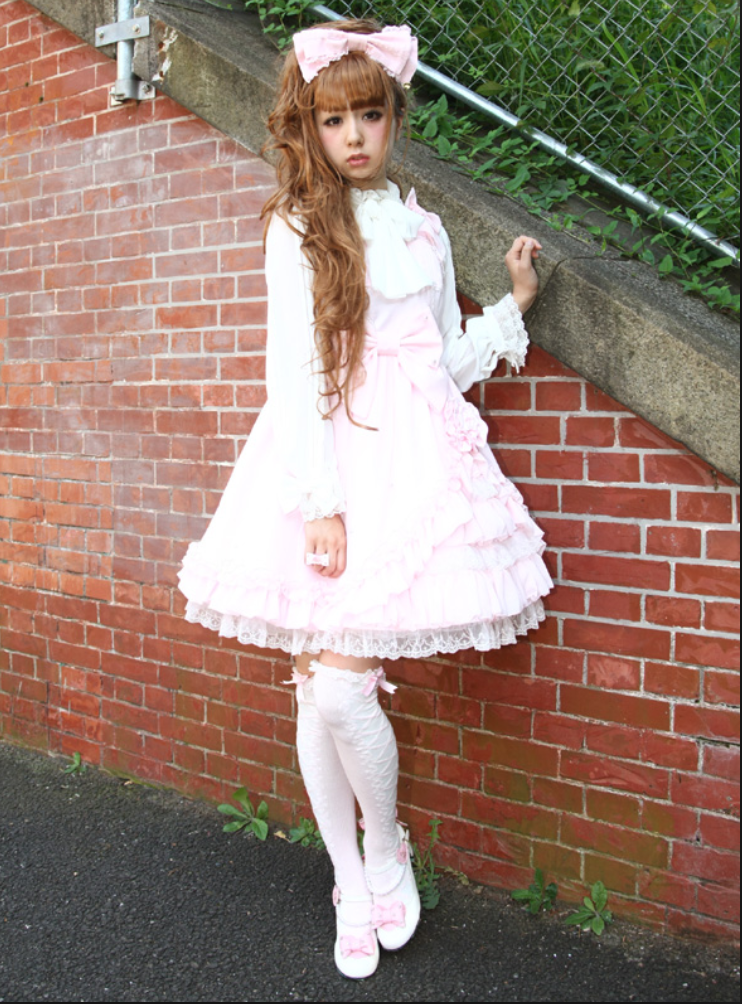
How to be Kawaii in the 21st century?
Kawaii: a word that suddenly arose all over the internet. If we Google the term, we are dragged into a seemingly childish world of bright, overwhelming colors, big eyes and an overall sense of cuteness. We don’t only have to simply observe this world, we can now easily merge ourselves into it, or even take part in it. This fluffy world of Kawaii goes beyond the online networks of the internet and becomes real to us in ways we have never seen before.
How to be Kawaii?
Influencers on platforms like Instagram and YouTube provide us with many guidelines that tell us exactly what to look like and how to behave to fit into a community of one’s choice. With images and ‘how to’-videos, they teach us about the rules we must adhere to create a certain identity. One could say that wiith the rise of socio-technological platforms it has never been this easy to master the ‘rules’ of belonging.
A platform like YouTube creates a space to construct (new) identity discourses, but that doesn’t mean those influencers are in any sense appropriate, or ‘right’ (Blommaert & Varis, 2015). They state the "rules" in the way they think is right. This can lead to certain ideas, concepts, discourses, and cultures being taken out of context. Which is to say discourse and images are “decontextualized and recontextualized” (Blommaert, 2005. p76). The power influencers have over the ways we perceive and talk about things seems to be more imposing and all-changing than we might have ever thought.
For example, when Manda31409 told me how to ‘channel’ my inner kawaii-ness, I was a bit surprised. While watching her YouTube video titled How To Be Kawaii In 10 Easy Steps, I wasn’t surprised by how she explained how to’get bright colorful lips and long eyelashes, or how I could look very cute by wearing pastel-colored dresses and wigs. No, I was surprised that she introduced this style as ‘Kawaii’, as an identity, or ‘Japanese fashion’, and that she claimed to teach me the rules of this very ‘style’ via this video. I was especially fascinated when I found out that Manda31409 is a 26-year-old girl that lives in Washington state, U.S.A..
From that moment on, I started wondering: how did that Japanese term Kawaii (literally translated as ‘cute’) end up in her videos? What does this Japanese word mean when taken out of its original context and appropriated as means of identity by American influencers like her? Can Manda31409 tell me the ‘right’ or ‘true’ rules of being Kawaii?
In this paper, I will look at this new Kawaii-discourse from two different perspectives. The first considers Orientalism, a theory coined by Edward Said in the 1980s. Within this concept, I will analyze how, and if, such YouTube videos overly romanticize Japan's 'Kawaii', and how Japan is seen as an exotic ‘other’ culture. I will further elaborate on how this theory has been altered through a 21st century mindset. Additionally, I will focus on how platforms like YouTube create space for new identity-discourses and communities online and how users like Manda31409 influence the way in which we regard and perceive concepts like Kawaii outside of Japan, especially in Western countries like Europe and the U.S..
What is Kawaii?
First of all, it is important to explain what Kawaii means and where the term comes from. However, the exact meaning of the word, especially how it is used in Western discourses, is hard to specify. I will explain the definition and history of Kawaii as a word, and as a concept, on the basis of Borggreen’s (2011) work 'Cute and Cool in Contemporary Japanese Visual Arts'. Adding to that, I will elaborate on the (Westernized) fashion-discourse of the Japanese style Lolita, which is highly influenced by the aesthetics of Kawaii.
Gunhild Borggreen (2011) explains that Kawaii is a Japanese word that literally translates into something that is sweet, cute, innocent, pure, gentle and vulnerable. It is also associated with more negative definitions like pathetic, poor or pitiable (Borggreen, 2011). In a global context, however, the term has a slightly different meaning.
As a concept, it has come to “signify a specific ‘Japanese’ kind of cute style found in various aspects of popular culture, such as in fashion, design, manga, anime, computer games, gadgets, and many other domains” (Borggreen, 2011. p41). Within fashion discourses Kawaii seems to have some overlap with the so-called Lolita or Harajuku fashion. These terms both refer to a child-like and cute colorful appearance, characterized by large eyes, a small heart-shaped mouth, fluffy skirts with lace, high knee socks, pastel-colored hair and a lot of Kawaii accessories.
Sociopolitical aspects of Kawaii
In his paper, Borggreen argues that the concept of Kawaii cannot be ignored as something empty or meaningless as we often view it in Western discourses. Borggreen (2011) explains that within Japanese culture, Kawaii as dressing up in cute and colourful school-girl outfits, is connected to historical ideas of the shojo, or ‘girls’ culture originating from early 20th-century manga-comics. These manga, or Japanese comics, had a huge influence on Kawaii subcultures in 1960s Japan.
“These youth styles are usually not connected to radical politics, but rather are self-expressions of resistance and rebellion”
Since the 1960’s Kawaii has played a part in the lives of many high-school girls in Japan. They distanced themselves from mainstream society and fought against authority by behaving in a childlike and angry manner. They created the image of cute and sweet, but at the same time rebellious girls. They started to read manga comics and refused to read the academic literature imposed on them the schools. But as Laura Miller points out, “these youth styles are usually not connected to radical politics, but rather are self-expressions of resistance and rebellion” (Miller, 2006. p27).
Due to its popularity, the concept of Kawaii spread widely throughout Japan. It was so influential that during Japan’s economic crisis in 1990, Kawaii was used as a form of soft power to spread an image of Japan's modernity.

Soft Power
This association with the economic crisis, however, didn't work out very positively either. At that same time, girls in the rebellious ‘Kawaii’ culture were blamed by the Japanese media for creating the economic crisis and other misfortunes that Japansuffered in the 1990s. Consequently, Kawaii influences on fashion and subcultures were seen as a dangerous female conspiracy against a patriarchal society. This combination of national and global popularity with a history of teenage girls' rebellion still characterizes the elements of Kawaii visible in Japanese culture today (Borggreen, 2011).
Kawaii in Lolita fashion
Extensive research done about Kawaii as a specific identity discourse or style is hard to find, or rather is yet to be done. To understand Kawaii used as a fashionor identity discourse, it is possible to view it through its connection with the Lolita fashion subculture mentioned above. Lolita fashion has many different forms and sub-groups, but it is signified by dressing up in an overly feminine and extravagant way. Further as Masafumi Monde (2013) states, it has 'infantilized’ and ‘eroticized’ aspects.
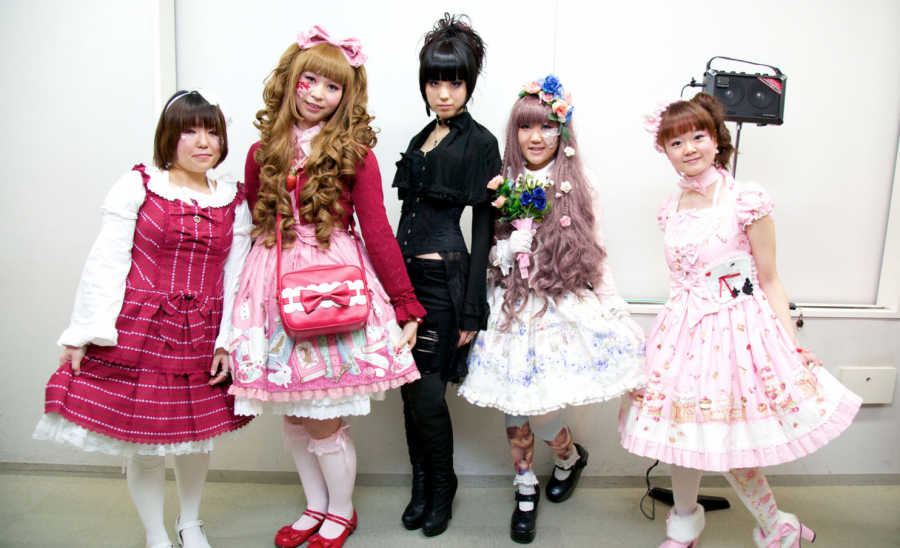
Japanese girls dressed Lolita
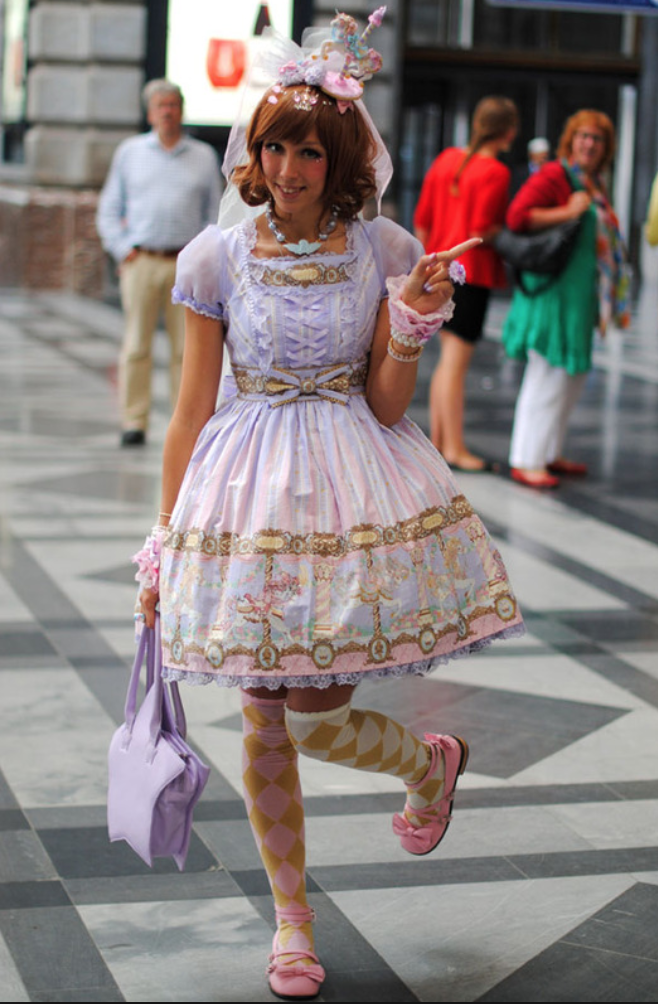
German girl dressed Lolita
Kawaii, in this sense, is an element that is part of Lolita fashion, as its archetypal quality is when something appears childlike and cute (Monde, 2013). The ‘infantilized’ and ‘sexualized’ character of the Lolita fashion subculture, is, however, only how it is perceived in some Western cultures. Only the westernized version of Lolita holds ideas of objectifying and infantilizing women, at least from a mainstream perspective (Monde, 2013).
Monde argues that Lolita is perceived like this because ‘hyperbolic’ girlishness and over-the-top dressing is not very popular in contemporary Western societies. European and American discourses tend to have cultural preconceptions of that construe ‘cute’ with girlish or infantile. The style is somewhat passive and unfavorable because it is associated with sexuality and therefore fetishizes the child-likeness and cuteness of the Kawaii aesthetics.
However in Japan itself, Lolita-fashion is not sexualized or infantilized because as Monde argues, Kawaii is not only something women or children can ‘be’. Japanese people perceive notions of cuteness very differently, “for they are culturally allowed to appreciate the concept longer into adulthood than for example Americans” (Monde, 2013. p174). Consequently, styles like Lolita are more likely to flourish in Japan, while in Western countries it's perceived unfavorably. Because of this, members of the Lolita community in European and American cultures tend to see Japanese discourses as the only spaces that create the freedom to dress in a Kawaii style in an everyday context (Monde, 2013).
This may be the reason why Kawaii itself is specifically mentioned in Manda’s videos, to focus on the style’s cute aspects instead of the sexualized and eroticized connotations it has in Western discourses. In Manda’s video, we see that Kawaii is used in its broad, Japanese sense, and is selected for its specific meaning and form as an identity and fashion style. At the same time, this means that the Japanese 'Kawaii' is taken out of its ‘authentic’ context. Consequently, the specific socio-political dynamics are lost. As Borggreen states: “the depths of critical encounters and softening the sharpness of subversive resistance, the social critique inherent in Kawaii culture thus becomes silenced” (Borggreen, 2011. p59).
In Manda’s videos, Kawaii is romanticized and used to describe the cute style as ‘daring to be yourself’. As Manda says: “Being Kawaii is all about being happy and just living your life to its fullest without caring what other people think about what you’re wearing” (Manda, min. 4:18). This romanticizing of ideas and concepts is a typical characteristic of the theory mentioned in the introduction: Orientalism.
Orientalism: representing the 'Orient'
In 1978 Edward Said introduced the concept of Orientalism to understand how the ‘other’ or ‘Orient’ is represented in the West. ‘West’ in this sense refers to Northern-European and American countries. Within that model, we see that the ‘other’ or ‘exotic’ culture is often romanticized and fantasized by Western cultures (Wagenaar, 2016). Japan is one of these ‘other’ cultures that is repeatedly overly romanticized in the Western discourses. Especially during colonial times, it was presented as very exotic with a focus on its elegant aesthetic features.
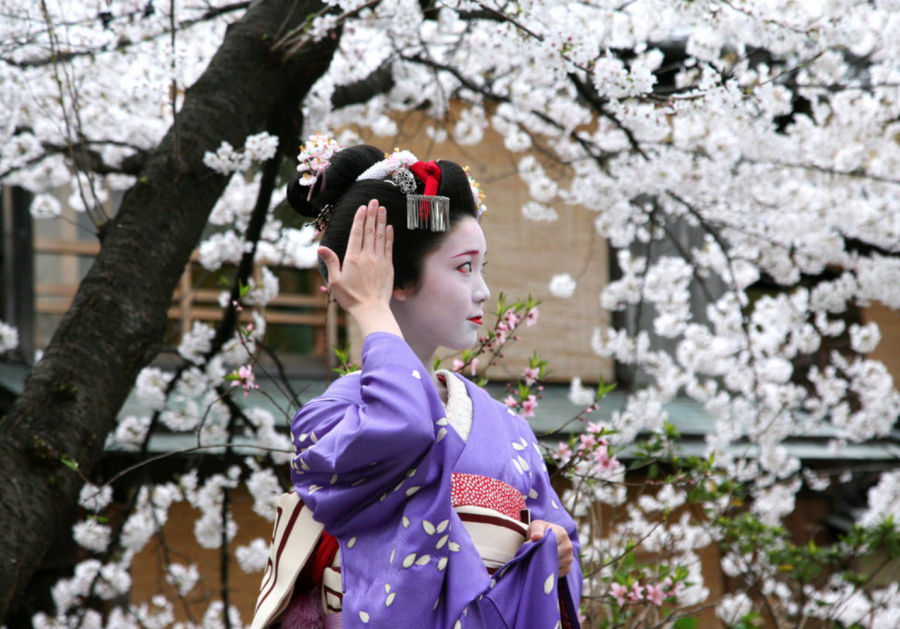
Traditional Orientalism
"The stereotypical framework in which Japan is understood as aesthetic yet menacing conceals a mechanism where the West dominates Japan and decides the identity of the country"
Wagenaar (2016) argues that “the stereotypical framework in which Japan is understood as aesthetic yet menacing conceals a mechanism where the West dominates Japan and decides the identity of the country” (p. 48). It was Western scholars and observers, particularly from Western European countries, who decided what Japan looked like, what was beautiful about Japan, and what was not. Aside from other non-Western cultures, studies about Japan, especially in the past, tended to focus on positively perceived characteristics of their culture, of their ‘otherness’. For instance, when thinking about traditional Japan, images of geishas, cherry blossoms, ninjas, and kimonos may first come to the mind. Nowadays, scholars consider these associations to be characteristic of ‘traditional Orientalism’ (Wagenaar, 2016).
Techno (Wacky) Orientalism
Since the 1990s Japan’s culture is no longer portrayed solely in that traditional way. Due to the rise of Japanese economic power, Japan has become synonymous with futuristic technologies. Its culture suddenly became associated with things like robots, artificial intelligence, networks, and virtual reality. This new version of Orientalism is called ‘Techno-Orientalism’.
Within this new discourse, Japan’s technological success has been associated with an exotic and futuristic Japanese identity and culture. However, this Techno-Orientalism is not only positively associated with Japan, but it also focuses on the dehumanized and soulless side of its technological society (Wagenaar, 2016).
Traditional orientalism and techno-orientalism aren’t the only types of orientalism that are associated with Japanese culture. In the article, Wacky Japan: A new face of orientalism, Wagenaar (2016) introduces a new kind of Orientalism, which he believes is exemplary of this era: Wacky Orientalism.
Wagenaar introduces this ‘improved’ Orientalism framework to understand how since the 2000s the West has increasingly judged Japan and its people to be 'weird'. Similar to Techno-Orientalism, Wacky-Orientalism also discusses how Japan is both negatively and positively judged by the West. Negative views of ‘weird’ Japan can be seen in the way it is presented in memes and videos with titles like “WTF Japan” or “because Japan”.
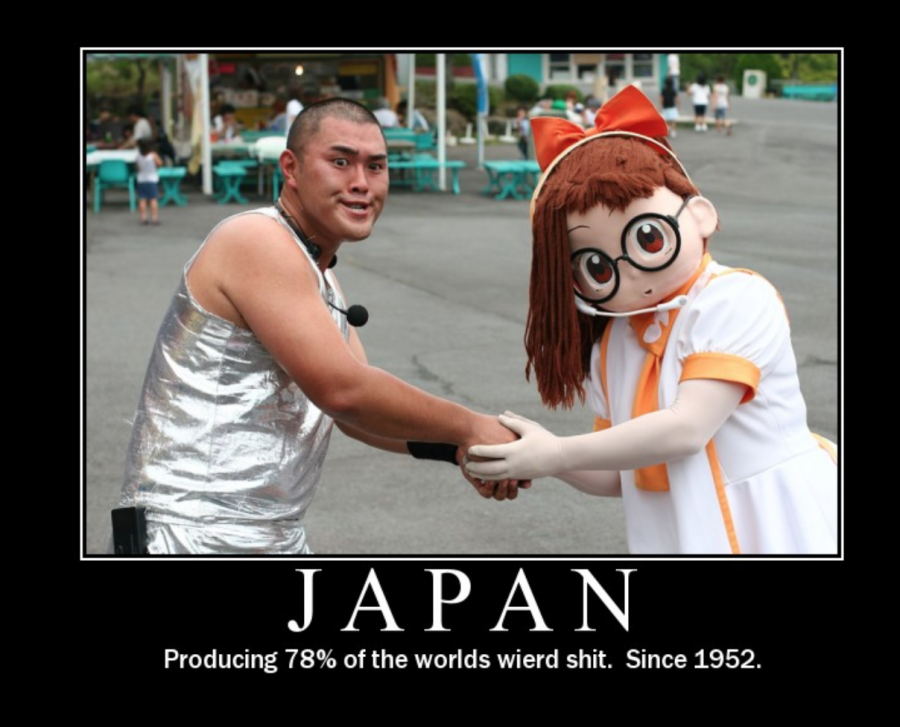
WTF Japan
Within this model, we can also see how this new image of Japan is portrayed as overly positive. This is where we return to Manda’s video.

Manda31409 Wacky Orientalism
Here we can see that Manda portrays kawaii and therefore also Japan as overly cute, crazy and wacky. With lots of accessories, colors, and enthusiasm she idealizes Japan’s culture and thus its identity. As Wagenaar (2016) argues: “Japan does not possess a voice in the creation of this narrative imposed by the West, nor can it really change it” (p. 51).
Kawaii as identity discourse
Manda isn’t the first to appropriate and romanticize kawaii. On YouTube there are hundreds if not thousands of videos that explain what ‘being Kawaii’ means. Each video does this in their own way, with their own rules. There seems to be a huge YouTube community of users from Western countries like England and the United States that create their own norms and values around this Westernized Kawaii discourse.
Such (online) communities, or ‘micro-hegemonies’, often only make up a small part of someone’s life. One can easily choose to belong to or leave at any moment. However, if one wants to belong to such a group, one has to obtain the right knowledge about the features that make the identity recognizable. Those micro-hegemonies often have leaders that decide what is and what is not appropriate within a certain identity-discourse (Blommaert & Varis, 2015). And it seems that guidelines put up by those ‘leaders’ online are taken for granted by many of their followers.
As a YouTuber with over thirty million views, we can consider Manda a leader in the ‘Western’ Kawaii-community. She is, or least claims to be, an ‘instructor’ of that specific identity. In her ‘how to’ video she enthusiastically gives her viewers tips and tricks for what to wear and how to dress to look cute and Kawaii. She explains what kind of hair accessories to buy, what perfume you should wear and which colors best fit the aesthetic.
Manda31409 is an ‘identity-constructor’ that tells us what elements are enough to be seen as a member of this comunity. She provides the viewer with the rules of belonging and enoughness in being Kawaii. Those tips and tricks together help people to construct a visible identity and shows to which group or identity category one belongs, or wants to belong. Those elements or features indicate a matter of ‘dosing’ every accessory, every color, every small detail that adds to the identity-construction. If one adds too much or too little of those details, one can be seen as ‘not belonging’ to a community. With this, Manda defines what is authentic or enough as an accent, and what is not (Blommaert & Varis, 2015).

So Kawaii!

Love the style!

Omg thank you!
To identify as kawaii is to wish to be recognizable as someone who knows the rules and has the knowledge. As we can see in the comments section presented above, the members of Manda31409’s specific community are eager to follow. Manda is almost idolized and, therefore ‘approved’ as a leader of their micro-hegemony, that defines their own form of ‘Kawaii’.
Criticism
However, because 'Kawaii' is used, appropriated, and placed within a totally different context, its meanings also change. As the term is “decontextualized and recontextualized,” the shape of the signs is modified, and with it, its essence. It is more about what those semiotics do in a society and cultural social context, it is language in 'action' (Blommaert, 2005).
This implies that for some, the way Manda uses Kawaii is ‘done’ in the ‘wrong’ way. It adds to the idea that one needs to have just ‘enough’ elements to be or even use the word ‘Kawaii’. It is a matter of serious precision.
Thus, change of context might lead to the 'wrong' interpretation or 'wrong' appropriation of accents (identity-construction) and semiotic means (context). With different understandings of the meaning of Kawaii, as a style and word, one can be the target of criticism from those who claim to know the right or authentic rules and meanings. For some, it might be that Manda uses the word Kawaii in a context that does not fit its ‘original’ culture - think about Kawaii’s sociopolitical and historical aspects Borggreen referred to. This thus leads to criticism from those who claim to ‘know’.
In the pictures below, we see some critique in the comments section of Manda31409’s video. These people seem to not agree with her tips and tricks or with her choice to call these Kawaii.

You don't even look kawaii

She is a weeaboo

Weeaboo is real..
The people commenting underneath her video call Manda a weeaboo, which refers to the idea that ‘Western’ people try to reenact Japanese styles but fail to do so because they don’t really know ‘their’ culture. By calling Manda a ‘Weeaboo’ those users at the same time claim to know ‘better’ and put themselves above her. In their eyes she failed as an identity-constructor and they differentiate themselves from her community.
They claim that how she uses Kawaii is not ‘really’ Japanese: it is not authentic. This is interesting because this ‘weeaboo-ness’, which originates from forums on the internet, seems to overlap with the concept Orientalism as presented earlier in this paper. It’s about ‘Westerners’ who create an overly romanticized image of Japan, one that seems to lack the complexity and diversity of its actual culture. But then again one might ask who decides how the term should be used in Western discourses?
A globalized Kawaii in a globalized world?
Manda31409’s case is a perfect example of how socio-technological platforms like YouTube have a major influence on (online) discourses, meaning and identity construction. The guidelines put up by these communities online are taken for granted by many of their followers. Hence, 'leaders' have a huge influence on a broad audience that is eager to belong. As we saw, this also means that words, styles, norms, and values can be taken out of context and given a whole new meaning. This is exactly what happened with ‘Kawaii’.
Manda31409 embraces that ‘wacky-ness’ or ‘weirdness’ of Japan, but portrays the word as both Japanese culture and as an identity category within a ‘how to’ discourse of ‘daring to be yourself’. Kawaii, which in Japan has a totally different connotation, is culturally appropriated and turned into a seemingly superficial identity discourse. Manda therefore symbolizes the modern mechanisms of Orientalism, wherein the West still seems to dominate Japan and decide its identity.
It is, however, noticeable that Kawaii isn’t included in Westernized Orientalist discourses on a broad spectrum of ‘things’ like it is in Japan. Kawaii in Western discourses is borrowed in the context of fashion and identity styles. A discourse in which it is apparently needed, as Western cultures lacked a word for this particular Japanese ‘cuteness’. It is possible that influencers like Manda wanted to create something similar to the free space that Japanese discourses allow around cuteness and child-like behavior.
In that sense, Kawaii came at the right moment. Its implementation in fashion discourses and subcultures allowed the sexual association with terms like Lolita to be somewhat less present in Westernized Kawaii-subcultures. So, there is the argument that from a Japanese perspective, this de-contextualization or appropriation of the term failed. However within the discourses of Western micro-communities, it appears to fit just right. As a broad term, it had the desired function: to name a specific identity construction and style. A style that now has a literal name in Western countries, and therefore creates a community that accepts this ‘cuteness’ after all.
References
Blommaert, J. & Varis, P. (2015). Enoughness, accent and light communities: Essays on contemporary identities. Tilburg Papers in Culture Studies nr. 139. p. 4-30
Blommaert, J. (2005). Discourse. Cambridge: University Press. Chapter 4: Language and Equality. p. 70-79
Borggreen, G. (2011). Cute and Cool in Contemporary Japanese Visual Arts. The Journal of Asian Studies. p. 39-59
Miller, L. (2006). Beauty Up. Exploring Contemporary Japanese Body Aesthetics. Berkeley: University of California Press. p. 27
Monde, M. (2013). The "Nationality" of Lolita Fashion. In Asia through Art and Anthropology: Cultural Translation Across Borders. Bloomsbury; UK, London. p. 171-176
Wagenaar, W. (2016). Wacky Japan: A new face of orientalism. Copenhagen: Nordic Institute of Asian Studies. p. 46-52
